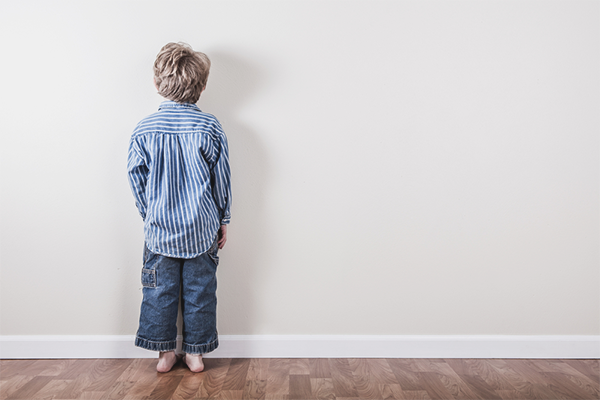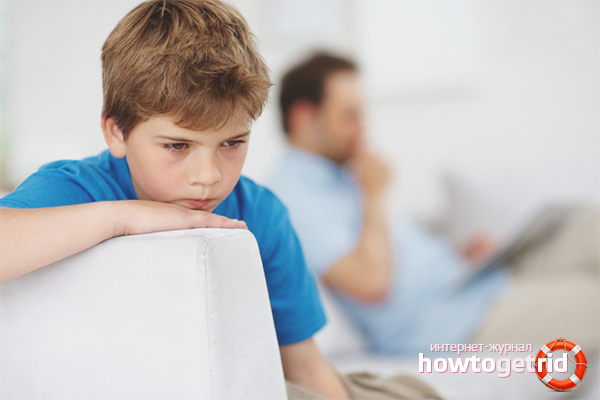The content of the article
The good behavior of the child should be encouraged, and the bad one should be punished. Parents in this way teach the young man to distinguish between good and evil, form his system of values. But any tools of education should be selected wisely. Some forms of punishment give good results when others cripple the child's psyche and turn the kid into a closed, fearful person with low self-esteem.
Step 1: Justify and explain
You can not put a child in the corner just like that. If he got angry and broke his plate, turned the porridge on a new sweater or cut his trousers into patches, adults can and should punish the culprit, but before that should explain why he is forbidden to make cartoons or a computer.
Psychologists recommend first exhale, count to ten, and better twenty, to calm the anger. Small children do nothing "out of spite." Any misconduct is an attempt to understand where the boundaries of the permitted ends, and the forbidden lands begin. When punishing parents show the child this very line, he assimilates information and tries not to do this anymore, but if he received enough weighty arguments.
Talking with a guilty kid should be strictly, but without screams. Scold not for the emotions that he feels, but only for bad deeds. For example, a child got angry and threw a cup of water on the floor. It broke, leaving a huge puddle on the floor. Mom is insulting and annoying, I want to hit the kid in the ass to teach you a lesson or shout to throw out the negative. Instead, you need to take a few deep breaths, look at the child and say: “You have the right to be offended (angry), but in our house it is not customary to beat the dishes (throw toys). I am punishing you not for your feelings, but for a bad deed. ”
Step 2: Effective Ways
Of course, such a method does not resemble punishment in the classical sense, but it works much more effectively than slaps and screams. The child will learn to be responsible for his actions and next time he will think about the possible consequences.
Step 3: Timely Punishment
Parents should respond immediately, not several days later. If the child is guilty on Tuesday, it makes no sense to punish him on Sunday and not to take with him to a picnic. Parents should follow a strict scheme:
- We learned that the child was in the mood;
- scolded and punished in accordance with the offense;
- forgiven and forgotten.
It is impossible to remember daily to the daughter or the son that he had a fight with the neighbor boy.Usually, children quickly learn such rules, and if it happened a second time, then the culprit has a good reason for doing so. In such cases, you need not to punish, but to find out the reason and solve the problem with the help of confidential conversations.
Step 4: Time to think
A child standing in the corner will simply get tired, but is unlikely to draw conclusions. Psychologists recommend using the Timeout method. Children should be seated on a chair or sofa, but sweets, toys, a telephone, and other entertainment should be kept away. The guilty kid should be left alone with his thoughts. Mom must voice the reason for which the child is punished, and the words or actions by which he can apologize.
Usually the kids are quite mobile, so they quickly get tired of sitting in one place. 3 minutes is enough for the culprit to realize that he really did a bad thing. Some mothers use an hourglass, which is placed in front of the child, for clarity. It seems to children that an entire eternity passes, therefore they try to behave well, so as not to fall on the chair anymore.
Reception works with kids from 2 to 5-6 years.The main task of a mother who is just beginning to master the “Time-Out” technique is to make sure that the child remains in place. Capricious and overly active children jump off, try to take a toy or phone, but parents must be strict and persistent. If the child gets up, he is returned back to the chair and the “counter” is reset. Did he have a minute left? Now you have to sit three more, and so on until the child stops resisting.
Tip: The culprit can sit on a chair or chair and hold it so that it does not run away. Shouting or dismissing hands is not advised; such methods only frighten the child. Parents must be persistent and uncompromising, so that the kid will understand that they do not play with him, but punish him for bad deeds.
Step 5: Silence
Small children are very attached to mom and dad, eager for their constant attention and communication. Psychologists recommend using the method of ignoring instead of physical punishment. Parents of a two-year-old baby after a gratuitous tantrum or antics should refuse to play with him and go about their business.Every time a child comes up, it’s necessary to explain why mom or dad doesn’t want to read to him or turn on a cartoon.
Children 3–4 years old are recommended to explain not only the reason, but also the way to make amends. Another technique works with five-year-olds and schoolchildren. Parents say only once what is his fault, and what should I apologize for. Then they are silent and ignore it. You can talk with your child when he asks for forgiveness and promises not to do so again.
Tip: You must carefully monitor the reaction of the baby and do not forget that the child’s psyche is very vulnerable. If the child is really ashamed, he is sufficiently punished. Ignoring should last no more than a day. You can not turn the method of education in the cause for a multi-day boycott.
Step 6: Privileges and Comic Penalties
Modern children have mobile phones, computers, tablets and other things with which they practically do not part. Is the child guilty? Specially violated my mother's ban? No cartoons for three days. Broccoli for dinner instead of cake. The Internet will appear when the two is fixed.
Parents should tell the exact date when the punishment will end, and keep their word. Psychologists recommend not to stretch the ban for weeks or months. In a child, the absence of a tablet is associated with a bad act only for the first 2–4 days. Then he begins to think that his parents just do not like him, so they scoff.
The kids who scatter cubes and do not want to clean, break cars or tear books, you need to pick up toys. It is advisable to put on the top shelves, so that the child could see bunnies and dolls, but could not reach. Mom is recommended not to pay attention to tantrums, to ignore tears and screams. In a calm and strict voice, repeat that the child will receive toys when he promises to remove them. If he scatters them again and leaves them, then mom will take them.
For some minor faults, it is advised to punish in comic form. Did the child run in dirty shoes on the washed floor? Let him return to the threshold, squat ten times and repeat: "I will not litter any more." And then mom should give him a rag and make him clean up after herself.
Children who do not want to wash their hands or carry dirty dishes to the sink can be made to draw appropriate posters. Pictures after hung in prominent places, and they will serve as a reminder.
Prohibited tricks
Do not frighten children with evil policemen, nurses or boarding schools. When a mother does not keep a promise, the child stops believing her. It is no longer the authority for the child, so it is not necessary to obey her.
Do not deprive children of food, blackmail or intimidate. Punishment should be alternated with praise for good deeds so that the child can see the difference and make his own conclusions.
Fostering a full-fledged and independent person is a laborious and troublesome business. Parents cannot do without punishments, but in order to become fewer, it is necessary to control not only the child, but also themselves.
Video: how to behave with a naughty child













To send